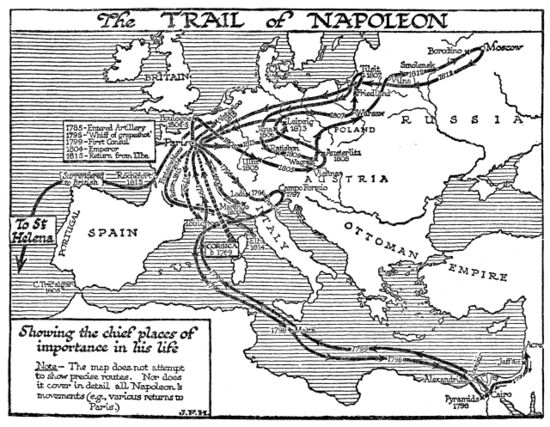imported>Chunbum Park |
imported>John Stephenson |
| (221 intermediate revisions by 8 users not shown) |
| Line 1: |
Line 1: |
| {{Image|Lachapskull.jpg|right|220px|Homo neanderthalensis skull from La Chapelle-aux-Saints, France.}} | | {{:{{FeaturedArticleTitle}}}} |
| The '''[[Neanderthal]]s''' are an extinct nonmodern hominid that come chronologically extremely close to the modern era, becoming extinct less than 30,000 years ago. The classic Neanderthal traits are found from about 75,000 to 35,000 years ago, but it is difficult to date the initial appearance of this species. Without great dating techniques, the best early estimate comes from the Moula Guercy site in France dating the earliest appearance of Neanderthals to 120,000 years ago.
| | <small> |
| | | ==Footnotes== |
| For decades the Neanderthals have been viewed as a hunched, hairy, stumbling, stupid cave man that lived tens of thousands of years ago. This image can be highly attributed to Marcellin Boule, a French paleoanthropologist at the beginning of the twentieth century. In 1908, at La Chapelle-aux-Saints in southwestern France a nearly complete male skeleton was excavated and Boule spent the better part of three years examining this specimen. The man was old in terms of Neanderthal standards, aging between 40 and 50 years old and suffered from severe arthritis in his spine. This fact was discovered long after Boule described him as hunched over, practicing an inefficient shuffling gait type of bipedalism. His preconceptions, opposed to scientific objectivity, resulted in the misconception about the genus as a whole. Today this is reflected in not only in normal perception but shown in popular culture, specifically the insurance company that concludes their process is "So Easy, a Caveman Can Do It." Interestingly, these commercials counter react the misconceptions by having offended cavemen be present and engaged in modern, human-like behavior, highlighting the misconception placed by Boule a hundred years ago.
| | {{reflist|2}} |
| | | </small> |
| ===Discovery=== | |
| Neander Valley, literally translated in German as "Neandertal", in the German Federal State of North Rhine-Westphalia, where the river Düssel flows to meet the Rhine. It is here that the first fossil to be recognized as a different kind of human was discovered. It this day in August of 1856 that many claim to be beginning of the field of paleoanthropology. Miners in search of limestone blasted open the entrance to a small cave, Feldhofer Cave (also called Feldhofer Grotto) where an array of fossilized bones were found. The miners mostly discarded the bones, but sat some aside to bring to a local school teacher, believing them to be bones from a cave bear. Included in this group was the skullcap that will eventually become the holotype of Homo neanderthalensis. The fossil displays a long skull joining with very pronounced brow ridges above the orbits. In addition, the miners came across two femora, five arm bones, part of the left ilium, portions of a scapula and multiple ribs. These fossils were delivered to a school teacher and amateur natural historian, Johann Fuhlrott.
| |
| | |
| [[Neanderthal|....]]
| |
Latest revision as of 10:19, 11 September 2020
Napoleon (Napoleon Bonaparte or, after 1804, Napoleon I, Emperor of the French) was a world historic figure and dictator of France from 1799 to 1814. He was the greatest general of his age--perhaps any age, with a sure command of battlefield tactics and campaign strategies, As a civil leader he played a major role in the French Revolution, then ended it when he became dictator in 1799 and Emperor of France in 1804 He modernized the French military, fiscal, political legal and religious systems. He fought an unending series of wars against Britain with a complex, ever-changing coalition of European nations on both sides. Refusing to compromise after his immense defeat in Russia in 1812, he was overwhelmed by a coalition of enemies and abdicated in 1814. In 1815 he returned from exile, took control of France, built a new army, and in 100 days almost succeeded--but was defeated at Waterloo and exiled to a remote island. His image and memory are central to French national identity, but he is despised by the British and Russians and is a controversial figure in Germany and elsewhere in Europe.
Rise to Power
Once the Revolution had begun, so many of the aristocratic officers turned against the Revolutionary government, or were exiled or executed, that a vacuum of senior leadership resulted. Promotions came very quickly now, and loyalty to the Revolution was as important as technical skill; Napoleon had both. His demerits were overlooked as he was twice reinstated, promoted, and allowed to collect his back pay. Paris knew him as an intellectual soldier deeply involved in politics. His first test of military genius came at Toulon in 1793, where the British had seized this key port. Napoleon, an acting Lieutenant-Colonel, used his artillery to force the British to abandon the city. He was immediately promoted by the Jacobin radicals under Robespierre to brigadier-general, joining the ranks of several brilliant young generals. He played a major role in defending Paris itself from counter-revolutionaries, and became the operational planner for the Army of Italy and planned two successful attacks in April 1794. He married Josephine (Rose de Beauharnais) in 1796, after falling violently in love with the older aristocratic widow.[1]
- ↑ Englund pp 63-73, 91-2, 97-8
